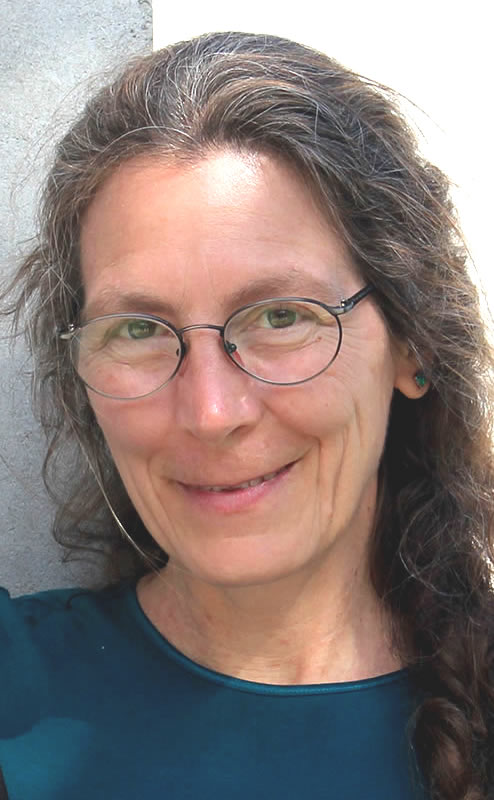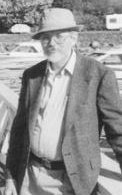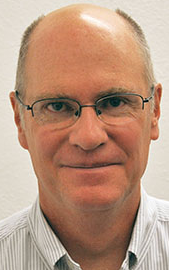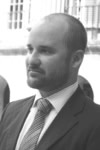
http://www.umn.edu/urelate
612-624-6868
Spring 2015 Course Announcements
 CSci 5619 Virtual Reality and 3D Interaction (3 credits)
CSci 5619 Virtual Reality and 3D Interaction (3 credits)
11:15 am - 12:30 pm,
Mondays & Wednesdays
Mechanical Engineering 212
Victoria Interrante, Computer Science and Engineering
 CPsy 8360: Special Topics In Child Psychology
CPsy 8360: Special Topics In Child Psychology
Human Culture, Thought, Language and Evolution
9:30 am - 12:00, Wednesdays
Institute of Child Development 105
Maria Sera, Institute of Child Development
Human culture, thought, language and evolution
Child Psychology 8360: Special Topics in child Psychology
Course Description: Are humans the "divine exception" to natural selection as Alfred Russell Wallace, an evolutionary thinker and contemporary of Darwin proposed? A scientific understanding of the history, development and evolution of human thought and language are central to answering this question. If evolution is a gradual process, then human cognitive and linguistic capacities should differ by a small amount from that of the great apes. But most contemporary scientists agree that this is not so, and they have struggled mightily to explain the apparent discontinuities between these human capacities and those of other animals. Darwin himself proposed that the use of language changed the human brain and enabled more sophisticated and powerful capacities to evolve. Other arguments focus on tool use or on a shift from competitive to cooperative societies. In this seminar, we will read two recently published books on the topic. The first, by Michael Tomasello, reviews and updates the thesis that the development of cooperative societies was central to the evolution of human thought and communication. The second, by Derek Bickerton, examines the issue from a more generative (linguistic) perspective and draws upon his work on the emergence of creoles — full fledge languages that emerge from a mixture of different languages. Importantly, language acquisition by children plays a critical role in this account. We will compare and contrast the arguments as we examine the details of each.
Readings:
Tomasello, M. (2014) A Natural History of Human Thinking. Harvard University Press, Cambridge Massachussetts and London England.
Bickerton, D. (2014) More than Nature Needs. Harvard University Press, Cambridge Massachussetts and London England.
Prerequisites: Students will be expected to have previous experience with topics covered in courses on Human Language or Human Cognition.
Format: The format for the course will be seminar discussions, with the professor providing some background material as needed, and students leading discussions on the weekly reading assignments. Students who are not leading the weekly discussions are expected to come to class having completed the readings, having written a short reaction paper, and thus ready to discuss the topic.
Assignments and Grading: Students will be required to write brief (1 page) reaction papers weekly (40%). They will also lead 2-3 discussions (30%). At the end of the semester, students will select a relevant topic, write an 8-10 page paper (20%), and make a 15-20 minute presentation on their topic (10%).
Class Participation and Reaction Papers (40%) Informed and engaged class participation will be required of every student. Thus, students need to come to class having completed all assignments as scheduled. Students will be required to write brief reaction papers weekly. Reaction papers should be typed and approximately one page in length (single spaced, 1 inch margin, 12 point font). Reaction papers should demonstrate that you have read the assigned readings and are thinking critically about the issues presented
Student-Lead Discussions (30%) Each student will be required to lead 2-3 discussions of the assigned readings. In these presentations, students will be expected to introduce the topic and provide background information, summarize the reading, and come to class with 3-5 questions to engage the other students in a critical discussion of the material.
Final Paper (20%) Students should select a topic related to the topics covered in the seminar that interests them, and write an 8-10 page paper (double spaced, 1 inch margins, 12 point font, APA style). Your paper should be based on at least 10 scientific references.
Individual Oral Presentation (10%) Students will prepare a brief (20-minute) presentation of their final papers.
 Psy 8960: - Graduate Seminar Quantitative Methods in Cognitive Neuroscience (3 credits)
Psy 8960: - Graduate Seminar Quantitative Methods in Cognitive Neuroscience (3 credits)
1:30 - 4:00 pm, Wednesdays
Location TBA
Stephen Engel, Psychology
In this course we will read and discuss papers using quantitative approaches to analyze behavioral, single unit, and fMRI data, in order to make inferences about the computations underlying perception. Students will choose and present papers from the literature, both "classics" and recent work, that introduce new methodology.
Example topics:
- Bayesian modeling of perceptual cue combination
- Diffusion modeling of reaction times and single unit responses
- Representational similarity analysis of functional MRI data.
 EEB 5327 Behavioral Ecology (3 credits)
EEB 5327 Behavioral Ecology (3 credits)
1:30 - 2:45 pm, Tuesdays and Thursdays
Ecology Building150
Dave Stephens, Ecology, Evolution, and Behavior
Evolutionary principles applied to aggressive competition, mate choice, cooperation, and parental investment. Optimization models used to examine foraging strategies, predator/prey interactions, and territoriality. Evolution of sex, sexual selection, dispersal. Evolutionary game theory.
 NSc 8217 Systems and Computational Neuroscience (2 credits)
NSc 8217 Systems and Computational Neuroscience (2 credits)
1:00 - 2:30 pm, Tuesdays
Jackson Hall 6-137
Geoff Ghose, Neuroscience
NSc 8217 "Systems and Computational Neuroscience" (2 cr.) will be continuing this spring semester. The course will be in journal club format, in which participants present and discuss recent original research papers. The topic this semester will be "Thalamocortical Attention Networks."
We are constantly using our experiences to anticipate important events and help filter out distractions. Because of the complexity and flexibility of such attentional allocation, most studies of the physiological mechanisms of attention have focused on cortical circuits. In the past few years, however, there has been increasing work demonstrating that subcortical sites, including the thalamus and pulvinar, play a vital role in attention. This class will discuss recent pharmacological, imaging, electrophysiological, and theoretical studies of how the rich and reciprocal pathways between thalamus and cortex contribute to attention.
Each meeting will focus on a single paper chosen by the presenter.
All interested students, faculty members, and postdocs are encouraged to attend. The course typically attracts participants from a variety of departments and perspectives. Students enrolled in the course will be expected to lead the discussion of at least 2 papers each session. The course meets from 1:00-2:30 in Jackson 6-137 every Tuesday.
I will present the initial paper Tuesday, January 21:
The pulvinar regulates information transmission between cortical areas based on attention demands Saalmann, Yuri B and Pinsk, Mark A and Wang, Liang and Li, Xin and Kastner, Sabine
Abstract
Selective attention mechanisms route behaviorally relevant information through large-scale cortical networks. Although evidence suggests that populations of cortical neurons synchronize their activity to preferentially transmit information about attentional priorities, it is unclear how cortical synchrony across a network is accomplished. Based on its anatomical connectivity with the cortex, we hypothesized that the pulvinar, a thalamic nucleus, regulates cortical synchrony. We mapped pulvino-cortical networks within the visual system, using diffusion tensor imaging, and simultaneously recorded spikes and field potentials from these interconnected network sites in monkeys performing a visuospatial attention task. The pulvinar synchronized activity between interconnected cortical areas according to attentional allocation, suggesting a critical role for the thalamus not only in attentional selection but more generally in regulating information transmission across the visual cortex.
This paper is available at: http://www.ncbi.nlm.nih.gov/entrez/query.fcgi?cmd=Retrieve&db=pubmed&dopt=AbstractPlus&list_uids=22879517
The tentative reading list can be seen at:
http://www.ghoselab.cmrr.umn.edu/Classes/8217/SubcorticalAttention.html
This reading list should be considered at starting point. For example, it includes literature reviews which are not appropriate for a detailed discussion.
The course calendar is at: http://www.ghoselab.cmrr.umn.edu/cal/month.php?cal=NSci+8217
and can be subscribed to (iCal/Google Calendar)
webcal://www.ghoselab.cmrr.umn.edu/cal/calendars/NSci%208217.ics
Previous topics for the course (and the associated reading lists) can be seen at:
 Psy 5960 Detection Theory in Psychology (3 credits)
Psy 5960 Detection Theory in Psychology (3 credits)
1:00 - 2:15 pm, Tuesdays and Thursdays
Elliott Hall N227
Neal F. Viemeister, Psychology
Signal Detection Theory (SDT) is a broad set of concepts and tools that have found wide application in areas of psychology, neuroscience, medicine, and in many other fields. In psychology its contributions are both methodological and theoretical. Its methodological contributions are a set of procedures that enable distinction between "sensitivity" and "bias" and, more generally, techniques for analyzing behavioral data in both laboratory and practical settings. The theoretical contributions are that SDT provides a sophisticated framework for thinking about and describing behavior, especially perceptual behavior.
This lecture course is an introduction to SDT. Although the emphasis is on applications in psychology, the basic concepts and tools readily generalize to many other areas. The course involves mathematics, especially elementary probability theory. The necessary mathematical skills will be reviewed during the first 2 weeks. The text is Wickens, T.D., Elementary Signal Detection Theory, Oxford Univ. Press, 2002. There will be additional readings, problem sets, and a final paper.
Questions? Contact me at nfv@umn.edu, 625-4024
 LING 5900/8900 Analogy in Language and Cognition
LING 5900/8900 Analogy in Language and Cognition
(3 credits)
1:00 - 2:15 pm, Mondays & Wednesdays
Hubert H. Humphrey Center 25
Michael Kac, Philosophy
Present-day views about what underlies the language faculty are largely concentrated at two extremes, presuming either a rich, sui-generis UG and not much else, or broadly general principles of cognition and perception and not much else. Esa Itkonen, in Analogy as Structure and Process, the central text for this course, takes a middle way, in which a not so rich but still sui-generis UG works in concert with general principles of cognition and perception, with a central position accorded to ANALOGY on the general-principles side. In this course we will examine and evaluate the case for this position. If time permits we will also take up analogy outside the domain of linguistics.
Requirements: Students in both courses will be required to write a paper on a relevant topic; students in 8900 will additionally be required to do an oral presentation.
 EPSY 8117 Writing Empirical Paper and Research/Grant Proposals in Education and Psychology (3 credits)
EPSY 8117 Writing Empirical Paper and Research/Grant Proposals in Education and Psychology (3 credits)
2:30 - 5:10 pm,
Wednesdays
Appleby Hall 319
Panayiota (Pani) Kendeou, Educational Psychology
A crucial skill in becoming a successful researcher is that of writing effective research articles and research proposals. The aim of this seminar is to improve your scientific writing skills. We will break down the writing process into components and work one component per week. Our general approach to each component will be to discuss what it entails, produce the written product, and critique our attempt. Each week we will be writing and critiquing. By the end of the course, the goal is to produce one good empirical paper ready to be submitted for publication. The course is suitable for graduate students who have already collected and analyzed data and aim to write an empirical paper for publication. For questions or more information, please contact Dr. Panayiota (Pani) Kendeou (kend0040@umn.edu).
EPSY 8116 Reading for Meaning: Cognitive Processes in the Comprehension of Texts (3 credits)
2:30 - 5:10 pm, Thursdays
Peik Gymnasium G65
Reading comprehension remains one of the most important means of knowledge acquisition and lifelong, independent learning. In this seminar, we will focus on the discussion of current research in the area of reading comprehension with the aim to advance our understanding of the underlying cognitive processes involved in text comprehension and their implications for pedagogy and assessment. Main topics include the development of reading comprehension skills, current theories of reading comprehension, text structure, task demands, individual differences (in reading skill, working memory, prior knowledge, epistemology) and standards of coherence. Graduate students are invited to register for the course, regardless of disciplinary background. For questions or more information, please contact Dr. Panayiota (Pani) Kendeou (kend0040@umn.edu).
 Kin 4133 Perceptual-Motor Control and Learning (3 credits)
Kin 4133 Perceptual-Motor Control and Learning (3 credits)
9:45 - 11:00
am, Tuesdays & Thursdays
Cooke 214
Thomas Stoffregen, Kinesiology
Kinesiology 4133 (Perceptual-motor control and learning) is an introduction to the emergence and stabilization of motor skills. The primary focus is on how we are able to coordinate movement -- movement of different parts of the body relative to one another, and movement of the body relative to the environment. The class is relevant to students who are interested in movement and development over the lifespan and issues of perception and action, in general. Most students in previous classes have career goals in the fields of human development, education, exercise physiology, or physical rehabilitation. Kin 4133 is not a course about development or enhancement of athletic abilities, coaching, or sports performance, although we will occasionally discuss examples from these areas. By the end of the course, students will have a broad awareness of many of the factors involved in the perceptual guidance of motor coordination. The class will operate at a fast pace and will require reading of original scientific literature, and brief daily writing assignments.
Class Time: 80% Lecture, 5% Discussion, 15% Laboratory.
Work Load: 40 pages reading per week, 10 pages writing per term, 3 exams. 5 lab projects, including short papers
Grade: 20% mid exam, 25% final exam, 10% reports/papers, 25% laboratory evaluation, 20% other evaluation. additional exam
Exam Format: multiple choice, with short essays
Kin 4136 Embodied Cognition (3 credits)
1:00 - 2: 15 pm Tuesdays & Thursdays
Cooke Hall 215
Kinesiology 4136 (Embodied Cognition) is an introduction to the study of relations between physical behavior and mental activity, including cognitive, emotional, and social aspects of behavior. We will provide students with the background necessary to understand both empirical and theoretical research relating human movement to psychological function in healthy and clinical populations. We will compare and contrast different concepts of embodied cognition, and their relation to more traditional concepts of relations between mind and body. Topics will cover the lifespan. The course will focus on empirical research and, accordingly, will not focus on philosophy of mind, spirituality, or religious approaches to mind-body relations. By the end of the course, students will have a broad awareness of the ways in which mental function and mental activity can be influenced by a person's perceptual-motor interactions with their environment. The class will operate at a fast pace and will require reading, research, and writing.
 Nsci 3100 Mind and Brain (3 credits)
Nsci 3100 Mind and Brain (3 credits)
David Redish, Neuroscience
This course is intended as a survey of the current thinking in the relationship between mind and brain. Over the last several decades, a new view of cognition and neural processing has been developed based on the concepts of algorithm, representation, computation, and information processing. Within this theoretical framework, psychological constructs are computational processes occurring across physical neural systems. We will take a neuroscience and psychological perspective in which the physical neuroscience instantiates but does not diminish the psychological constructs. Although our conceptual framework will be computational, this course will not require or expect any mathematical or computer background.
Goal
At the completion of this class, you will understand the implications of the physical nature of the brain — how mentation is explicable from physical processes, and how decision-making arises from those same physical processes. Importantly, you will also understand the limitations of current knowledge and the methodologies being used to push those limitations. This class is not intended as a final step in this understanding, but as a first step into these issues. At the conclusion of the class, you should have sufficient understanding to continue more in-depth reading and study in these issues.
Format
The format of each class will be 10 minutes of review of the homework from the previous week, a one hour (interactive) lecture followed by a 20-minute break out session in which the students will address a discussion question in groups of 4-5, and a 5-minute reintegration whole-class discussion. The lectures will be Socratic, and students should expect to be ready to answer questions during the lecture.
 Psy 8036 Generative models of natural images (3 credits)
Psy 8036 Generative models of natural images (3 credits)
First meeting Tuesday, Jan 20th, 3:00 pm. Regular time to be decided.
Elliott Hall S204
Dan Kersten, Psychology
While computer vision has made substantial progress in the development of algorithms for various restricted visual tasks, including object detection and recognition, achieving human-like visual capabilities still remains elusive. On the other hand, while there has also been substantial progress in understanding human vision and its relation to cortical activity, we do not understand the brain's algorithms underlying functional behaviors.
One can identify three three fundamental problems that the human visual system has solved but whose computational solutions remain a challenge:
1) Managing uncertainty. The visual system has the ability to do robust scene inference with multiple features whose causes are locally uncertain.
2) Scalability. Humans can deal with the enormous space of possible objects as they appear in different contexts in natural images.
3) Task flexibility. Humans rapidly adapt to new visual tasks and novel environments.
These are "big" problems, but there is an argument that solutions will rely on advances in modeling the generation of natural images. A generative model provides for "explanations", conscious or unconscious, of incoming image information. Such explanations can range from shallow to deep. For example, there is a good understanding of low-level "natural image statistics" as (shallow) summaries. And at the other extreme, there is also a good understanding of how 3D graphics can provide high-level (deep) explanations of how images result from physical scenes. Deep, causal models provide, in principle, knowledge that can be used to deal with local uncertainty, scalability and task flexibility. However, there are substantial unsolved problems as to how to structure and use deep generative knowledge for image interpretation. For example, to date it has not been feasible to interpret natural images by fitting a 3D graphics model. In this seminar we will review research relevant to the development and application of generative models in several specific domains including: human faces and expressions, visual character and word forms, human body poses and actions, and dynamic flows.
 SLHS 8630 Language
SLHS 8630 Language
8:30 - 11:00 am , Thursdays
Shevlin Hall 110
Yang Zhang, Speech-Language-Hearing Sciences
 ARTH 8190 Issues in Ancient Art and Archaeology:
ARTH 8190 Issues in Ancient Art and Archaeology:
Understanding Images
and Environments of Power (3 credits)
4:00 - 6:00 pm, Mondays
Heller Hall 445
Matthew Canepa, Art History
This seminar puts theoretical insights from cognitive science and critical theory into dialog with discourse in the history of art and archaeology relating to the construction of images and environments (both natural and architectonic) of political and religious power. Problems include the role of the visual, material and spatial in the extended mind/cognition, inculcation of- or resistances to- ideological formulations in human experience, and the creation, maintenance and manipulation of memory (personal and collective). The weekly topics of the seminar meetings will be:
- Neuroplasticity, Niche Formation and Cultural Evolution
- Power in Critical Theory and Social-Psychology/Psychiatry
- Cognition Embodied, Embedded, Enacted, Extended and Envisioned
- Cognitive Artifacts, Hybrid Minds and Human (Visual and Material) Cultural Evolution
- Art, Ritual, Religious Experience and Embodied Simulations
- The Power of Art and the Visuality of Violence in Antiquity
- Social Cognition, Contagion and Collective Memory
- Phenomenologies of Natural, Urban and Architectonic Space and Place in Ancient Mesopotamia
- Cross-Cultural Social, Material and Visual Entanglements between the Mediterranean and Western Asia
- The Power of Images and Images of Transformation in the Age of Augustus and Constantine.
